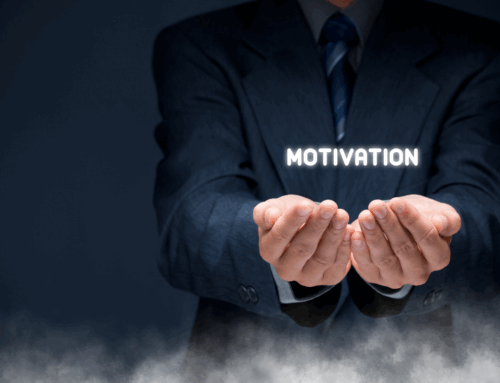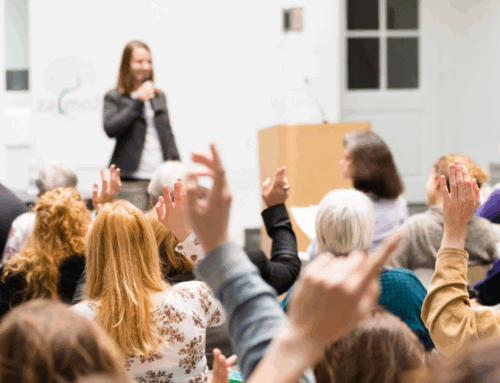If you are a keynote speaker, you may often be asked to spend the last 15 minutes or so of your hour in Q and A. A 45-minute talk followed by 15 minutes of Q and A is a very typical arrangement with a keynote speaker. Here’s how to ensure those final 15 minutes go well.
But first an aside about “Fireside Chats.” Recently, conferences have been asking more often for “Fireside Chats” with the fire optional. The idea is to have a more casual discussion with a moderator or questioner. From the standpoint of the conference organizers, it’s a way to reduce risk, and sometimes to pay less, too. And for the speaker, it’s an easier gig than holding the stage the entire time. But it also offers less opportunity to shine. You’re sharing the stage with someone else, and that means you’ll be less memorable. For that reason, politely decline if you can and opt for the keynote. That is, if you are looking to establish or maintain a keynote speaking career. (Panels are a trap for speakers too in the same way.)
OK, back to Q and A. How to best handle it? First of all, if you are good at fielding questions, don’t wait until the end. Take questions at 20 minutes and 40 minutes. Plan your keynote around those two breaks for Q and A. That optimizes the audience’s attention spans and avoids the awkward silence that sometimes transpires at the beginning of the Q and A because the audience has sat in silence for 45 minutes and has forgotten how to speak.
If you are waiting until the end despite the above advice, then save 2 – 3 minutes of your speech for the very end so that you can close strong. The most dangerous aspect of Q and A from the speaker’s point of view is that you are in effect turning the stage over to the questions, which may or may not be brilliant, or even worth answering. You also sometimes run into the questioner-who-just-wants-to-talk and who has a pseudo-question with lots of statement in it and very little ask. Saving a bit of your speech until the end means that you can control the last thing the audience hears, which is what they tend to remember best. So, make that something you’ve prepared.
Here are a few more tips for getting the most out of the audience’s questions.
Begin by listening closely to the question. Be patient. You’re in adrenaline mode, which means you’re not the best listener right now. You’ll hear the first part of the question and be tempted to assume the rest. Resist. Wait out the question, standing still, facing the questioner, and listen to the entire question with your whole body. Why? People ask questions to get answers, sure, but also to be heard and seen. It takes courage to ask a question in front of your peers. So, give the brave souls your entire attention. By showing respect to the audience, you’ll get respect back.
Repeat the question to show you’ve understood it. People often start talking before the mike gets to them, or from a corner of the room where not everyone can hear them. Repeating the question back to the questioner does three things: it makes sure you’ve got the question right, it ensures that the entire audience has heard it, and it gives you time to prepare your answer. “What you’re asking is whether a boa constrictor can take down an alligator, right?” That way, if you need to, you can slightly re-phrase the question in order to be able to answer it more easily. Don’t overdue the re-phrasing; keep it subtle.
Identify the emotion behind the question if you can. It’s a more powerful reinforcement of the questioner if you can identify the emotion underlying the question. “What I hear you saying is that, in the battle between the alligators and the boa constrictors, your fear of snakes wins out over your fear of gators, so you’re rooting for the gators, is that right?” There’s something very satisfying and bonding for people to have their emotions spotted and ratified in this way. To do this well requires close listening and some emotional intelligence. Of course, never make fun of or belittle the emotion. Treat it, and the questioner, with respect.
With a little practice, you’ll find your Q and A sessions highly successful, satisfying ways to interact with your audience.









Excellent piece re Q and A. That’s often where the speakers personality comes through. Thank you!
Indeed. I can’t resist adding that if the speaker’s personality isn’t coming through during the speech, there’s something wrong with the speech!